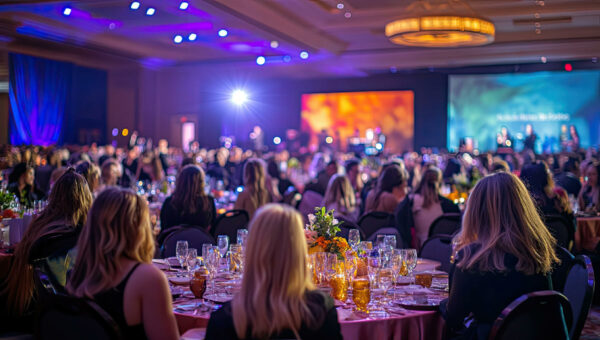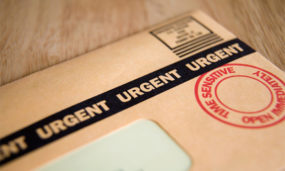The following is a hand-picked guest post from Samantha Swain. Enjoy, and you can read more about Samantha below.
***
In the nonprofit world, events often get a bad reputation. They’re seen as expensive, time-consuming, and not always worth the return on investment. But what if we reframed how we think about events? What if, instead of viewing them as standalone parties, we integrated them into our broader donor cultivation strategy?
The team at The Better Fundraising Company has long advocated for the cycle of “Ask, Thank, Report, Repeat” as the cornerstone of effective fundraising. Today, we want to explore how events can strengthen each part of this cycle – and why they should be an intentional part of your donor cultivation continuum.
Events as an Extension of Your Mission
Before diving into the cycle, let’s establish an important premise: the best nonprofit events are those that allow donors to experience your mission firsthand. When a donor attends your event, they should walk away with a deeper understanding of your work, the people you serve, and the impact their support makes possible.
Think of your events as windows into your organization’s soul – opportunities for donors to see, hear, feel, and connect with the work they’re funding. This experiential element is unique to events.
Let’s Build Events into “Ask, Thank, Report, Repeat”
The Ask
Events provide unique asking opportunities that complement your direct mail, digital, and personal solicitation strategies:
- Public asks at events can create momentum and inspire others to give
- Peer-to-peer giving happens naturally when enthusiastic supporters bring friends
- One-on-one conversations during events can lay groundwork for major gift solicitations
Remember: an event without a clear ask is a missed opportunity. Every event should include at least one moment where attendees are invited to support your work. Then in the moment, when they give via a paddle raise or text to give, they should be thanked.
The Thank You
Events allow you instant, in-the-moment donor stewardship and thank you.
- Publicly recognize donors and their impact
- Applaud paddles going up
- Print bid names on the paddles so that fundraising hosts can use first names
- Use technology like a text to give platform that allows a name to appear on the screen
The Report
Events are powerful reporting tools as your event is a story of your work:
- Share impact stories through video, presentations, or testimonials
- Have program participants speak directly to donors about how their lives have changed
- Display visual representations of your impact (photos, infographics, exhibits)
- Create immersive experiences that demonstrate your work in action
- Take photos and share them on social media to demonstrate that folks were a part of your work
- And most important, similar to a report after a direct mail appeal, be sure to report out the results and impact of the event
The emotional connection formed when donors witness your impact firsthand is invaluable – it creates memories that last far longer than a written report. But don’t forget the written report too.
Repeat
Events build anticipation for the next engagement:
- Use events to announce upcoming initiatives that will need support
- Create event series that naturally lead donors to the next opportunity
- Follow up with attendees to continue the conversation
- Use event interactions to inform your understanding of donor interests for future communications
Building Your Event Strategy Within the Donor Cultivation Continuum
To truly integrate events into your donor cultivation cycle:
Map your donor journey. Identify where different types of events fit within your cultivation, solicitation, and stewardship pathways. There are different event models for awareness, acquisition, engagement, stewardship, and legacy giving. Pick the model that works best for your current donor needs.
Segment your audience. Different donor segments should be invited to different types of events based on their giving level, interests, and relationship stage.
Create a year-round calendar. Plan events that complement your other fundraising activities and provide regular touchpoints throughout the year. Events are a big labor lift so 1-2 big events a year is often the best-case scenario.
Measure what matters. Look beyond net revenue to evaluate events. Consider metrics like new donor acquisition, donor retention, increased giving from attendees, and relationship advancement.
Follow up intentionally. An event is never the end of the conversation—it’s an inflection point that should lead to the next meaningful interaction.
Events as Part of the Bigger Picture
The true power of events comes when they’re viewed not as isolated fundraising activities but as integral components of your overall donor engagement strategy. Each event should move donors forward in their journey with your organization.
By thoughtfully designing events that enhance your Ask, Thank, Report, Repeat cycle, you’ll create more meaningful donor experiences, deeper relationships, and ultimately, greater long-term support for your mission.
Remember: the goal isn’t just to hold successful events – it’s to use events successfully as part of cultivating lifelong donors who are passionate about your cause.
***
Steven says, “Samantha Swaim has more than 20 years of event planning and fundraising expertise. She is the co-author of Planning a Successful Major Donor Event, is the founder of the annual Elevate fundraising event conference scheduled for March 3-4, 2026 and is the co-host of The Fundraising Elevator podcast – which I recently appeared on: check it out!”

Samantha Swaim
Samantha Swaim has more than 20 years of event planning and fundraising expertise. She founded Swaim Strategies, a fundraising event consultancy, in 2004, working internationally with nonprofit organizations to produce impactful events that move missions forward. Samantha is the co-author of “Planning a Successful Major Donor Event”, is the founder of the annual Elevate fundraising event conference scheduled for March 3-4, 2026 and is the co-host of “The Fundraising Elevator” podcast. She is on a mission to support nonprofits in elevating their impact through events.




